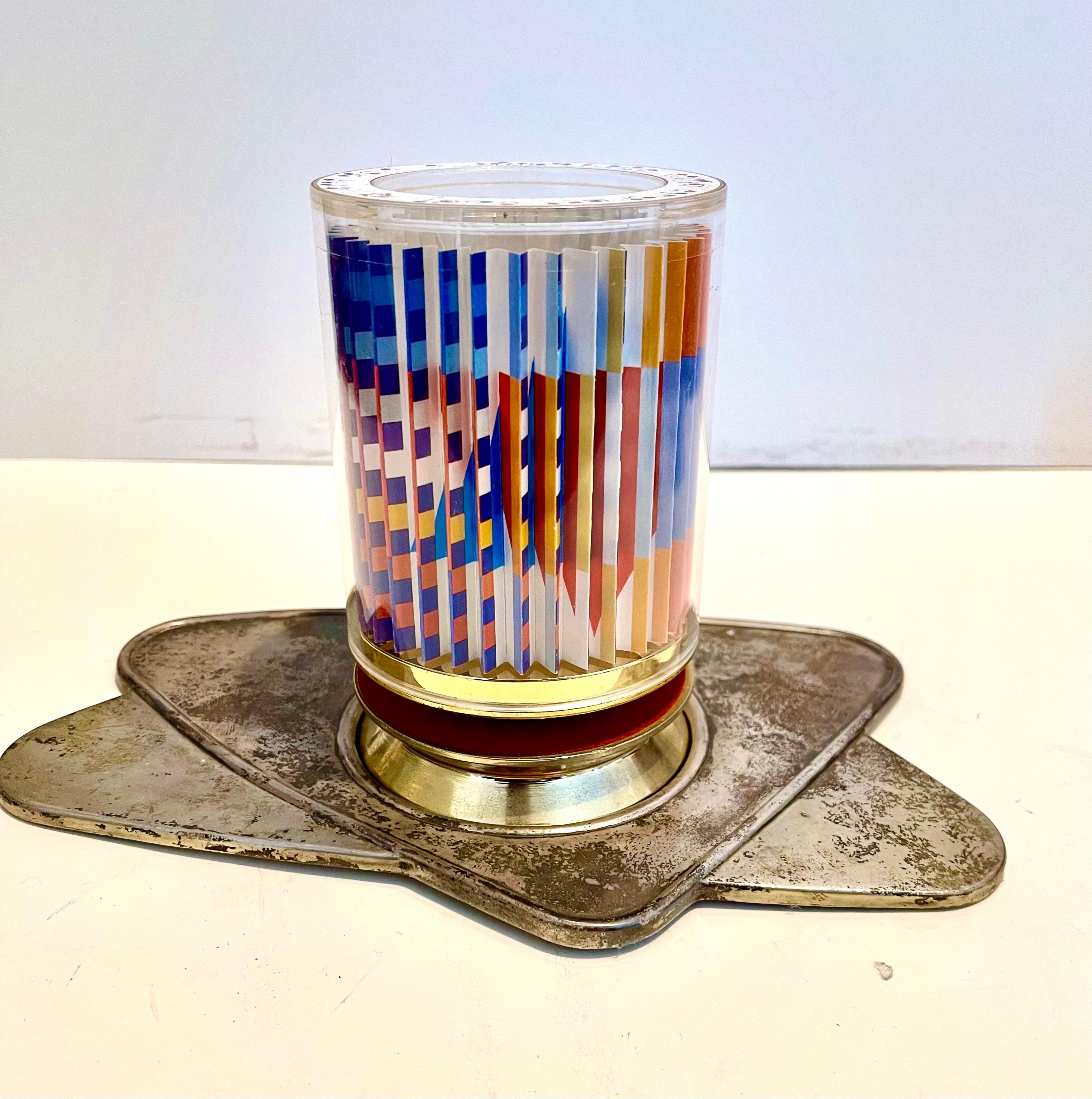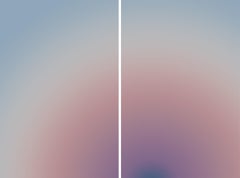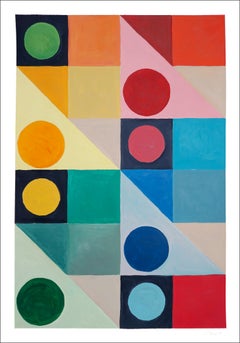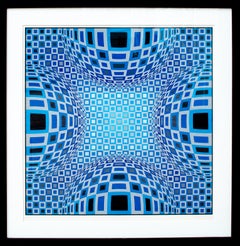Questions & Answers
Our trusted network of 1stDibs sellers answer common questions
Who is a famous perception artist?
1 Answer

One famous perception artist is Victor Vasarely. He is widely considered the grandfather of Op art, the term most often used to describe perception art. Decades after Vasarely created early examples of this work, the Op art movement emerged in the 1960s, mirroring the counterculture of the time in its embrace of visual trickery, graphic shapes and bright colors. Some notable Op artists include Josef Albers, Bridget Riley and Jesús Rafael Soto. On 1stDibs, find a selection of Op art.
1stDibs ExpertJanuary 27, 2025
Related Questions
- Who are some famous portrait artists?1 Answer
- What are the names of some famous artists?1 Answer
- Who is the most famous mosaic artist?1 Answer
- Who is the most famous street artist?1 Answer
- Who is a famous inkblot artist?1 Answer
Shop for Op Art on 1stDibs
Rear Window View, Purple Pastel Tones, Mauve Hue Abstract Diptych, Aurora Print
Located in Barcelona, ES
Cyd Fontaine (Lausanne, 1992) is a contemporary artist renowned for her captivating use of dreamy atmospheric gradients, which has helped her carve a distinctive niche in the world o...
Category
2010s Op Art Abstract Prints
Materials
Photographic Paper, C Print, Giclée, Archival Pigment
Primary Tones Geometric Rainbow, Vertical CMYK and Circles Squares, Red, Yellow
Located in Barcelona, ES
These series of paintings by Natalia Roman gather their inspiration from geometric, minimalist shapes and paintings from the beginning of Modernism, with a special emphasis on Bauhau...
Category
2010s Op Art Abstract Paintings
Materials
Acrylic, Handmade Paper
Victor Vasarely 1980s Optical Illusion Serigraph
Located in New York, NY
Victor Vasarely (Hungarian/French, 1906-1997)
Enigma, Four Blue Spheres
Serigraph
Sight: 25 3/4 x 25 3/4 in.
Framed: 34 1/3 x 33 1/2 x 1 in.
Numbered lower left: 74/125
Signed lower ...
Category
1980s Op Art Abstract Prints
Materials
Screen
Temple of Evening Reds, 1983 Acrylic OpArt by Cleveland School Artist
Located in Beachwood, OH
Richard Anuszkiewicz (American, 1930-2020)
Temple of Evening Reds, 1983
Acrylic on canvas
Signed verso
36 x 36 inches
36.75 x 36.75 inches, framed
Richard Anuszkiewicz was born in E...
Category
1980s Op Art Abstract Paintings
Materials
Acrylic
Curved Dimensions, Abstract OpArt Geometrical, Mid-Century Cleveland Artist
Located in Beachwood, OH
Edwin Mieczkowski (American, 1929-2017)
Curved Dimensions, 1965
Acrylic on board
Signed, dated and titled verso
30 x 29.75 inches
Edwin Mieczkowski, born in Pittsburgh, was a leader of geometric and perceptual abstraction during the latter part of the 20th century. Mieczkowski's work first came to prominence in "The Responsive Eye" exhibition, the nation's first major exhibition of perceptual art, held at the Museum of Modern Art in New York in 1965.
Mieczkowski was also featured in the 1964 article in Timemagazine that first used the term "Op Art" to describe paintings that manipulated visual cues in order to reorder and excite viewers' perceptual responses.
With a complex aesthetic that over time has transcended mere tricks of optical art, Mieczkowski has spent nearly four decades producing geometrically paintings, drawings and sculptures, a genre of modern art that is known broadly as perceptual abstraction.
His output of static and dynamic forms create a body of work, still largely intact, that uses visually disorienting, meticulously arranged lines, dazzling kaleidoscopic colors, and alluring juxtapositions of hue and tone, to playfully and seductively present new challenges for the viewer's eyes. The desired result is an optical effect of perpetual motion, harmonics and rhythm. . . .
Along with Frank Hewitt and Ernst Benkert, Mieczkowski was a co-founder in 1959 of the Anonima* group that worked together in Cleveland and New York and declared itself free from the pressures of the art market and the pursuit of personal fame. Members of Anonima often left their works unsigned and vowed to shun the usual art market venues such as commercial galleries, biennials and competitions. Instead, they engaged in a rigorous, self-imposed program of painting exercises to explore the effects of geometry and color on visual perception.
Although Mieczkowski's work hung side-by-side in the MOMA "Responsive Eye" exhibition with such colleagues as Josef Albers, Victor Vasarely, Richard Anuszkiewicz, Morris Louis, Kenneth Noland, Carlos Cruz...
Category
1960s Op Art Abstract Paintings
Materials
Acrylic
Projet de tapisserie, Société internationale d'art XXe siècle
Located in Southampton, NY
Lithograph on vélin paper. Paper Size: 12.4 x 9.65 inches. Inscription: Unsigned and unnumbered, as issued. Notes: From the album, XXe siècle, Nouvelle série N°4 (double) Janvier 195...
Category
1950s Op Art Abstract Prints
Materials
Lithograph
$796 Sale Price
20% Off
Free Shipping


